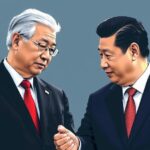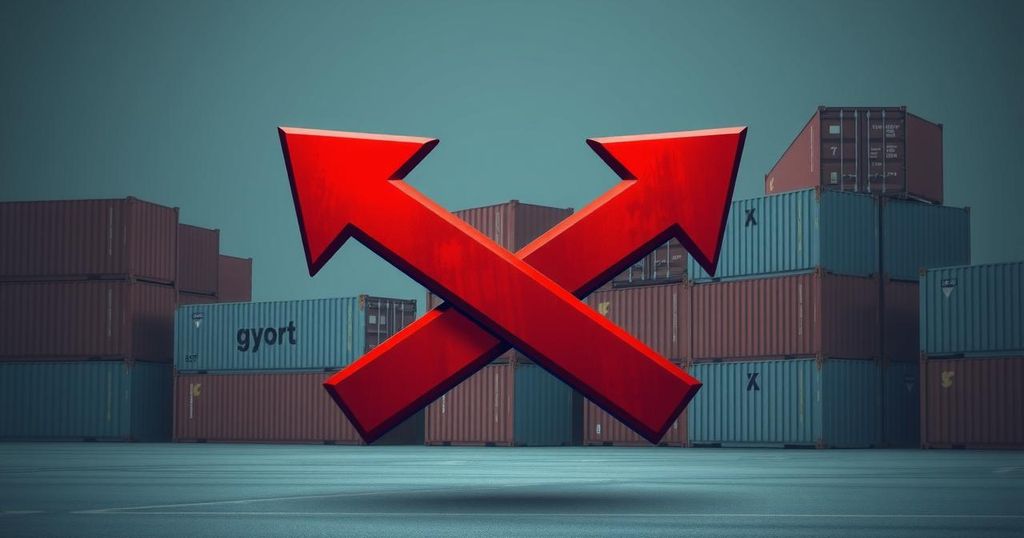Myanmar’s Civil War: Navigating a Complex Geopolitical Landscape
Myanmar’s civil conflict, now four years post-coup, sees waning global attention as major powers shift focus. The junta faces significant challenges from a resistance coalition, while China’s influence grows amid the instability. The NUG’s leadership struggles to unify forces against the SAC, raising concerns over Myanmar’s future stability and potential balkanization due to declining US support.
Four years following Myanmar’s military coup and the ensuing civil conflict, global attention on the country is waning. Major geopolitical shifts are overshadowing Myanmar’s plight, with the United States under President Trump making significant foreign policy alterations, the European Union preoccupied with the Russia-Ukraine war, and Japan undergoing internal political challenges. Consequently, Myanmar’s future appears contingent upon the civil war’s progression, China’s growing influence, and the relatively minor maneuvers of ASEAN member states.
The suspension of a $45 million scholarship program by the United States indicates that Myanmar’s resistance coalition, known as the State Administration Council (SAC), is unlikely to depend on Washington’s support any longer. Meanwhile, increasing military spending demands upon NATO allies by Trump underscores a shift in U.S. foreign engagement. As global leadership falters, Japan’s Prime Minister Shigeru Ishiba’s detachment complicates regional stability, diverging from the proactive approach of former Prime Minister Shinzo Abe.
After four years of conflict, it is evident that the junta is losing ground to the resistance coalition, which includes the civilian-led National Unity Government (NUG), the People’s Defence Force (PDF), and several ethnic armed organizations (EAOs). The EAOs now largely control Myanmar’s border regions, with estimates suggesting that the SAC holds less than half of the nation’s territory. As civil war dynamics shift further against the SAC, the EAOs are becoming increasingly dominant forces.
Within this dynamic, the Arakan Army has emerged as the most effective military force among the EAOs. As the EAOs continue to gain momentum, maintaining pace becomes challenging for the NUG and PDF units, which are more accustomed to grassroots warfare than large-scale battles. To adapt, the NUG must develop the PDFs into a cohesive military entity with a unified command structure, yet current leadership remains ineffective and lacking necessary charisma and resolve.
China’s interests in Myanmar are becoming more apparent as the SAC’s territorial losses escalate. Facing potential security risks due to the fragmentation of Myanmar, China is motivated to stabilize the region and is inclined to support a semblance of an election to restore order. However, the SAC is hesitant, as the election process raises concerns about the potential political fate of Senior General Min Aung Hlaing, the coup’s architect.
In the ASEAN context, Malaysia’s Prime Minister Anwar Ibrahim is looking to bolster his political legacy both domestically and regionally. Indicators such as the ministerial meeting in Bangkok that included both SAC and Malaysian representatives suggest a move toward negotiating elections—as a potential resolution to the ongoing crisis. Nonetheless, such elections will likely face significant opposition from the NUG and its supporters.
Given these circumstances, Myanmar’s situation may approach a pivotal resolution this year. If the United States continues to withdraw support, the resistance coalition’s efforts may falter, paving the way for increased Chinese influence. Moreover, Myanmar’s political future could devolve into fragmentation and chaos, further jeopardizing regional stability.
Myanmar’s ongoing civil war, which began after a military coup in February 2021, has drawn global scrutiny. The aftermath of the coup has seen a dramatic rise in resistance against the junta, led by a coalition of various groups including the NUG, PDF, and several ethnic armed organizations. Meanwhile, geopolitical landscapes are shifting, with major powers re-evaluating their foreign policies under pressures from other conflicts, particularly in Europe. This complex interplay of local resistance and international dynamics is crucial in understanding Myanmar’s future trajectories.
The current geopolitical scenario suggests that Myanmar’s fate hinges on the developments within its civil war, its relationships with regional powers such as China, and foreign support or lack thereof. With the SAC losing ground and the resistance coalition struggling for coherence, the potential for a significant political realignment exists. However, this may also lead to increased fragmentation and greater external influence, particularly from China, unless a viable solution can be brokered.
Original Source: www.bangkokpost.com








Post Comment